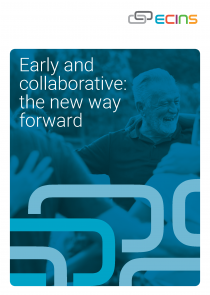The journey should take us from point A to B in a few clearly labelled steps. But as we all know, the reality can be a complex game of departmental snakes and ladders, which is fraught with repetition and duplication of effort.
Part of the reason for this relates to the historic way that services were created. They were labelled as nouns, such as “Statutory Off Road Vehicle Notification”, and designed around internal processes. They focused mainly on the needs of expert administrators, as they hark back to an era when self-service was a rarity. These legacy service names were created at a time when filing cabinets were overflowing with casework papers and sharing information involved a photocopier and a transit envelope.
Since the advent of digitisation, we’re encouraged to self-serve as much as possible, but the structure of services has taken a little while to catch up. To make life easier, naming conventions should be based around the verbs that we each associate with the thing that we’re trying to achieve. We shouldn’t have to work out what something is called before being able to use it.
The real cost of noun services.
If a service is designed around a verb, such as “Get a passport”, it saves money.
- Cost of manually signposting someone
- Cost of duplicated effort
- Cost of repeated processing for the same individual
- Cost of handling a complaint
Noun services are like building blocks without a diagram — a 300 piece Ikea flat pack with no instructions.
People end up using them in the wrong order and by the time they’ve learnt them, they may not need them again.
Verbs make sense and help teams to consider the bigger picture at every turn. They cut through the granularity and create something close to a straight line. One of the design principles set out by the Government Digital Service (GDS) explains: “Build digital services, not websites. A service is something that helps people to do something. Our job is to uncover user needs, and build the service that meets those needs. Of course much of that will be pages on the web, but we’re not here to build websites. The digital world has to connect to the real world, so we have to think about all aspects of a service, and make sure they add up to something that meets user needs.”
Verb services need to also allow us to move seamlessly between the online and offline worlds. Some may prefer to begin offline and others would gladly download an app.
Getting started with verb services.
Selecting the right terminology is vital as it sets expectations for all service users. It also reinforces the big picture for those involved in delivering the service — e.g. it gives them an understanding of how their own work impacts the broader scheme of things. With this in mind, continual user research is vital to uncover what people are trying to achieve and how a service can help them to get there. All prior assumptions need to be disregarded and important decision-making should be backed up with firm evidence.
One aspect to decide upon is the level of specificity, as “move abroad” is too generic, but “apply for a VAF1A form” is too precise. Research should allow you to get into the minds of service users and fit the terminology around their own thinking. There are various tools to help with this area of user research such as tree testing which involves participants trying to locate a particular topic from within a hierarchy of named cards.
Usability testing can also be useful if it’s conducted in the right way. Usability tests usually focus on a single website and participants are set tasks, such as “pay a council tax bill”. But with the bigger picture in mind, you could run a test which begins with some written questions, such as “you’re looking to build an extension, how would you find out about planning regulations?”. After this questionnaire, you could ask the participant to complete their tasks online, if they felt they would normally do so.
Service mapping is another tool that allows you to quickly run through different ways to involve various teams at key points. It’s essentially an illustration of the different elements that need to be included in a service for it to function properly. Often you’ll find ways that several different departments can all serve as an adequate entry point, which is exactly as it should be.
Wide-ranging implications and deep organisational change.
In one respect, thinking about services as verbs seems a little superficial and maybe you’re thinking “but changing a name won’t change a culture”. Under the surface there’s clearly a whole set of issues for local, regional and national Government to solve. But the naming of services helps everyone to contextualise exactly what it is they’re working towards and gradually the ingrained silo mentality will be eroded everywhere.
This was never going to be easy, but we’re too far down the road to turn back now. Noun services just aren’t serving anyone. If you agree that verb services are the way forward, here’s a poster to remind everyone.


